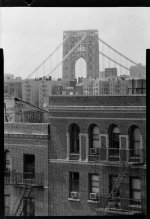mhv
Registered User
Just a correction, but D-23 is not a low contrast developer, if by "low contrast" we agree on the meaning of "developer meant to reduce contrast to a N-2 or intended to tame the extreme contrast of specialty films like Tech Pan."
D-23 is D-76 without the hydroquinone, and was meant to make replenishement easier. It's sharp, cheap, and gives similar results to most ordinary developers.
D-23 is D-76 without the hydroquinone, and was meant to make replenishement easier. It's sharp, cheap, and gives similar results to most ordinary developers.


